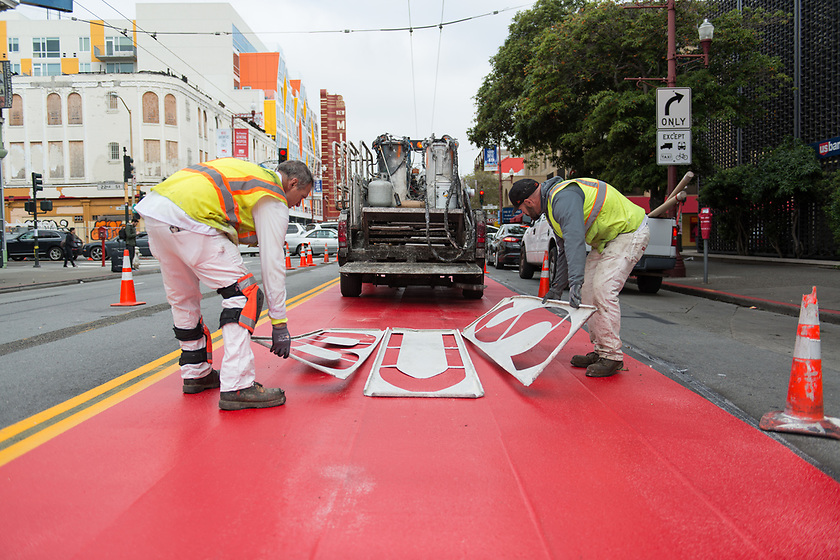The White House’s American Jobs Plan Would Reorient the Country’s Transportation Priorities, Focusing on Safety, Equity, Climate, and Access
 “President Biden’s plan is the most visionary proposal for the nation’s transportation network since the dawn of the interstate highway system,” said Janette Sadik-Khan, NACTO Chair. “Rather than doubling down on building new roads that worsen America’s safety, climate, and equity crises, the Administration is laying the transformational groundwork to rebuild the streets that we have to prioritize people, safety and climate—and going all-in on transit as the first mobility option for America’s future.”
“President Biden’s plan is the most visionary proposal for the nation’s transportation network since the dawn of the interstate highway system,” said Janette Sadik-Khan, NACTO Chair. “Rather than doubling down on building new roads that worsen America’s safety, climate, and equity crises, the Administration is laying the transformational groundwork to rebuild the streets that we have to prioritize people, safety and climate—and going all-in on transit as the first mobility option for America’s future.”
NACTO has long called for funding transportation in a manner that addresses the defining challenges of our time, from climate change to economic injustice to public health and safety. The American Jobs Plan is positioned to do just that through:
- Investments in public transit: No public good generates as many returns for sustainability, equity, and economic activity as transit. By building on the transit funding in the American Rescue Plan and dedicating $85 billion to expanding and improving transit service, the plan can provide Americans with affordable and sustainable access to the destinations and services that make for prosperous and vibrant cities.
- Dedicated safety funding: The White House echoes NACTO’s City Limits guidance in pointing out that over 35,000 people die in traffic crashes in the U.S. each year, making America’s roads the most dangerous among all industrialized nations. The Administration’s plan focuses on safety as the most important priority in our transportation system, from its proposal to invest $20 billion in state and local safety initiatives, as well as shifting the bulk of roadway spending to maintaining and improving (with better street design) the roads we have, rather than endlessly expanding them in a never-ending cycle of more roadways, more traffic, and more traffic deaths.
- Confronting the legacy of racism in transportation: Historical and ongoing inequities in infrastructure choices have contributed significantly to the barriers to opportunities, lack of mobility, and higher burden of traffic violence in low-income and communities of color. The President’s proposal to invest $20 billion in removing existing barriers and prioritizing access for marginalized communities will begin to remedy the injustices of the past, and all aspects of the plan elevate the policies and priorities that we need to make our country’s transportation system more equitable, from an emphasis on safe streets to expanding transit, not highways.
“How much we fund infrastructure is half of the equation; what we spend it on is the other,” said Corinne Kisner, Executive Director of NACTO. “The Biden Administration’s plan is a dramatic shift from the business-as-usual approach to transportation funding, and can fundamentally reshape what we get from the streets in our cities and neighborhoods. Realizing this vision will also require removing the many structural impediments to progress, from outdated federal design standards to how funding actually flows to local communities. We’re heartened by the conversation to date and look forward to working closely with the Administration and Congress to make sure the details meet the needs of American cities and people.”
###
About the National Association of City Transportation Officials (NACTO)
NACTO is an association of 89 major North American cities and transit agencies formed to exchange transportation ideas, insights, and practices and cooperatively approach national transportation issues. The organization’s mission is to build cities as places for people, with safe, sustainable, accessible, and equitable transportation choices that support a strong economy and vibrant quality of life. To learn more, visit nacto.org or follow us on Twitter at @NACTO.
For Immediate Release | March 31, 2021
Press Contact: Alexander Engel | [email protected]
Related: See NACTO’s federal policy priorities for a just, sustainable recovery and some of the details we are looking to see in the months ahead